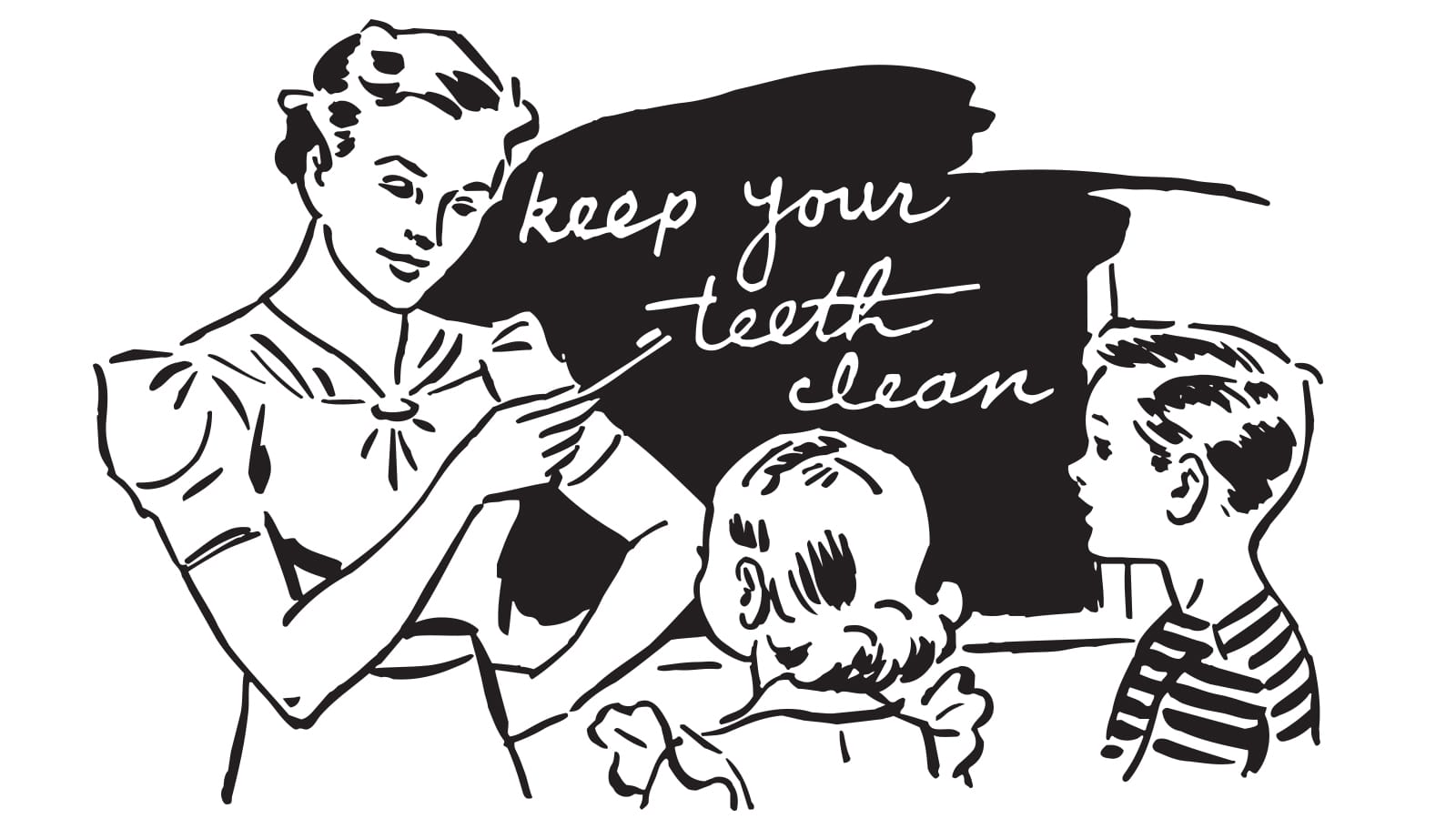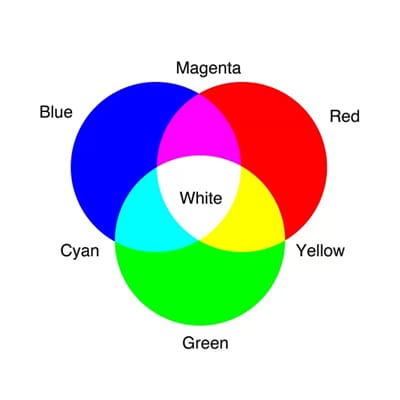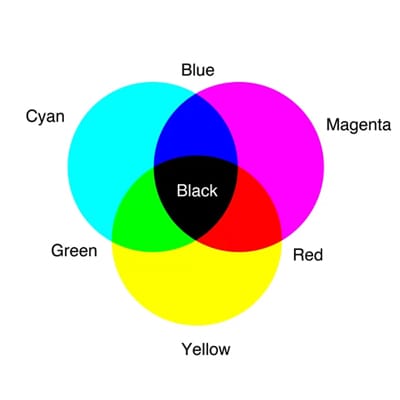Why Purple Toothpaste Won’t Make Your Teeth White

You may have seen advertisements recently touting a tooth-whitening gel that claims to “cancel out” stains because of its purple color.
Even going so far as to put a yellow balloon into the gel and, essentially, pull out a white balloon. They claim that it’s the result of “Color Theory” and to a degree they’re correct. But let’s examine why their claim is actually just a clever misrepresentation meant to sell their product.
*Full disclosure: To be fair, we have tried this product.*
Color Theory 101
Color theory is the study of how colors interact with each other and the emotions they evoke. It’s all about understanding the relationships between different hues, tones, and shades, and how they can be combined to create compelling visual experiences. Now, when we say “colors” we need to first acknowledge that we’re discussing theory for both pigment color and light color. This distinction is how people who sell purple toothpaste are able to make a convincing argument, but, still not one that has a factual basis.
In the case of our Purple Toothpaste, we need to dig into the two primary sub-theories that regulate what our brains interpret as color. These additional theories are known as “Additive Light Theory” and “Subtractive Light Theory.”
What is Additive Light Theory?
Additive Light Theory describes how different colors of light combine to create new colors. This theory operates on the principle that colors are added together to create new hues, and it’s most relevant in systems where light is projected or emitted, such as computer screens, TV displays, and theater lighting.
How It Works
In the additive light model, the primary colors are Red, Green, and Blue, often abbreviated as RGB. The starting point is darkness or black. When no light is emitted or added, the result is black. When you add one or more of the primary colors, you get various secondary and tertiary colors. When you combine all the primary colors of light at their maximum intensity, they produce white light.
To sum it up, Additive Light Theory tells us how different colors of light interact and combine to produce new colors, starting from black and culminating in white when all colors are fully added together.

What is Subtractive Light Theory?
Subtractive Color Theory is the principle used to describe how colors mix when dealing with pigments, dyes, or filters, rather than light. This theory is most relevant in systems where color is created by absorbing (subtracting) colors from white light and reflecting or transmitting the rest. Think of painting, printing, and even mixing colored playdough.
How It Works
In the subtractive model, the primary colors are Cyan, Magenta, and Yellow, commonly abbreviated as CMY. In printing, black ink (K for “key”) is often added as a fourth primary to deepen shadows and define details, making it CMYK. The starting point is a white surface, which reflects all colors of light. When you add pigment or ink, you’re actually subtracting colors from the light that the surface reflects. Ideally, combining all primary pigments (CMY) absorbs all colors and produces black. In reality, imperfections in pigments often result in a muddy brown. That’s why black ink is usually added in printing (making it CMYK).
In summary, Subtractive Color Theory explains how colors mix when we’re dealing with pigments or materials that absorb light. Unlike additive color theory, where colors are created by adding light, subtractive color theory works by removing or “subtracting” wavelengths of light, leaving behind the color that we ultimately see.

So, Why Doesn’t Purple Toothpaste Cancel Out Yellow Stains?
The claim made by the Purple Toothpaste folks is that it “cancels out” Yellow stains because Purple is complimentary to Yellow. In other words, Yellow and Purple are on the opposite sides of the color wheel. The concept of “canceling out” a color with its complementary color is rooted in both additive and subtractive color theories. Here’s how it works in each:
The complementary colors in the world of light include red & cyan, green & magenta, and blue & yellow. When you mix them, they create white light, canceling each other out and producing neutrality.
In the world of pigments and dyes, colors have complements too. The primary colors and their complements are cyan & red, magenta & green, and yellow & blue. When you mix a pigment of one color with its complement, they often create a neutral gray or brown.
But what about Purple? I don’t see Purple on the list.
It is essential to note that not all color models consider purple to have the same complement. The complement of purple varies depending on the model.
In the additive color theory model (RGB), which uses red, green, and blue, complementary color is needed to create white light. Purple in the RGB model is typically a blend of red and blue. To create white light, green needs to be added. Therefore, the complement of purple in the RGB model is green.
In the subtractive color theory model (CMYK), which uses cyan, magenta, and yellow, the complement of a color is what you combine with it to produce black (or a neutral gray or brown, depending on the pigments used). Purple in the CMYK model is often a version of magenta with a touch of blue or cyan. To produce black, yellow needs to be added. Hence, in subtractive color theory, yellow is considered purple’s complement.
Seriously, Can We Wrap This Up?
Good grief, yes! Now that you know a little more about Color Theory and the concepts behind what the Purple Toothpaste folks are claiming. If you haven’t pieced it together yet, here is the problem with claiming that purple toothpaste can remove yellow stains from teeth: the claim conflates and confuses the two color theories and acts as if they are the same. They are saying that adding purple pigment (a subtractive theory) cancels out the yellow in your teeth to create white (additive theory). Since the color in your teeth is already being reflected, you’d have to add another light source to make your teeth appear white, not a pigment.
Purple toothpaste is just purple toothpaste. It’s purple because the dyes and pigments used in its production absorb all light other than purple. If you put purple toothpaste on anything yellow, it will not change the color of that thing to white. Both things would continue reflecting their own light. If you were to add purple toothpaste to yellow toothpaste, well, that’d be brown and probably wouldn’t look very good either.
 When discussing Additive and Subtractive Light Theories in school, one of my instructors proposed a bit of a logical paradox in order to get us to understand. He said to the class,
When discussing Additive and Subtractive Light Theories in school, one of my instructors proposed a bit of a logical paradox in order to get us to understand. He said to the class,






